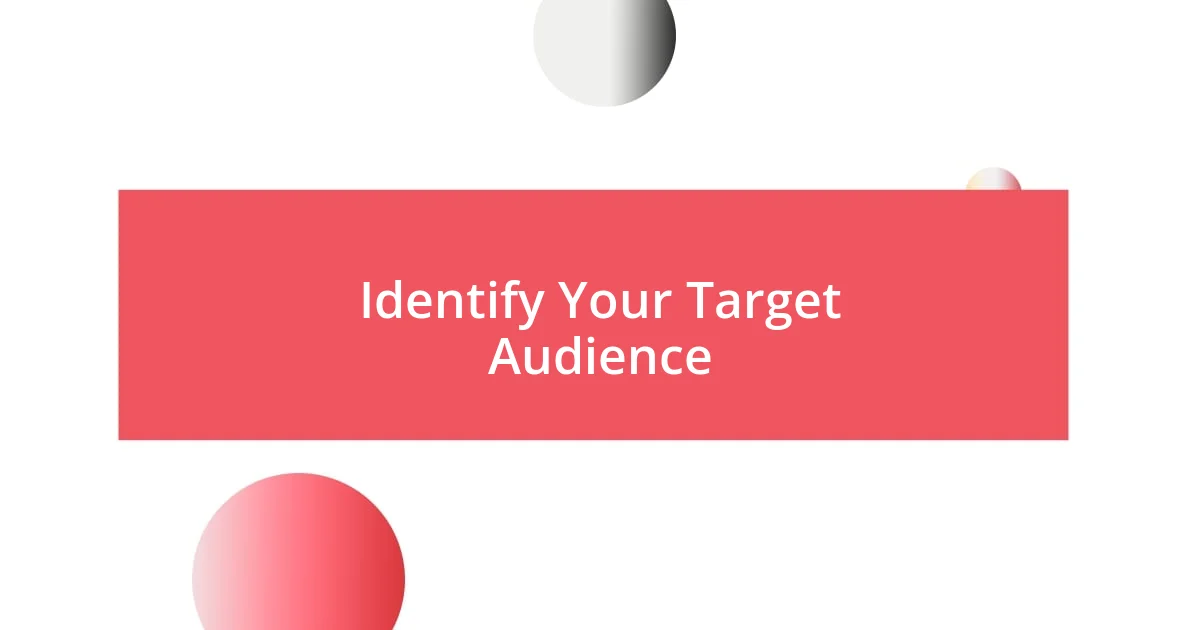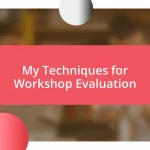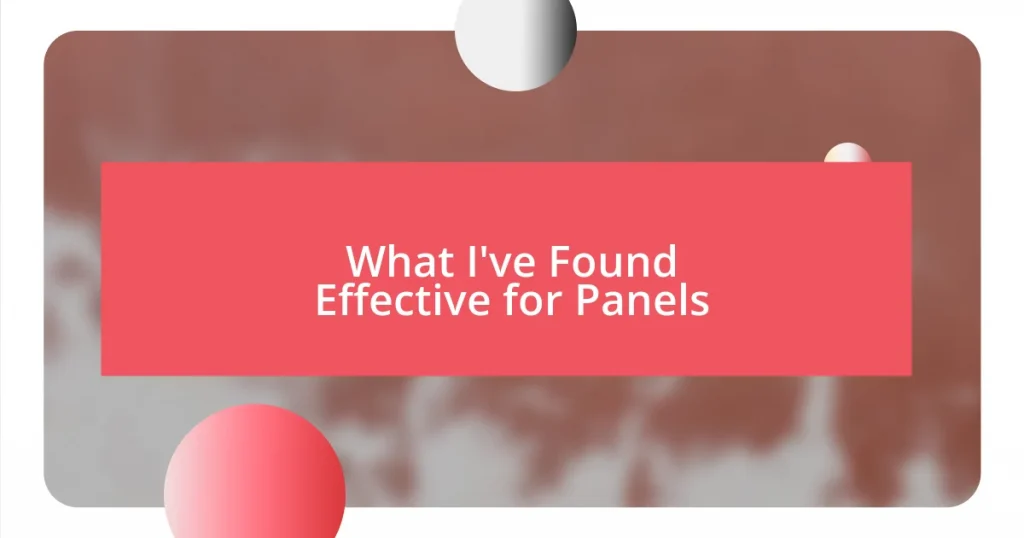Key takeaways:
- Define clear workshop goals aligned with audience needs to ensure a focused and impactful experience.
- Incorporate interactive activities and diverse learning styles to enhance engagement and facilitate meaningful discussions.
- Gather and implement feedback to continuously refine workshops, improving content and participant satisfaction over time.

Define Your Workshop Goals
Defining your workshop goals sets the stage for everything that follows. I remember the first time I conducted a workshop; I was overwhelmed with ideas and topics. Yet, it wasn’t until I distilled my vision into clear, actionable goals that I felt my workshop truly took shape. It made me wonder: what do I want my participants to walk away with?
Setting specific goals not only helps you stay focused but also shapes the experiences you create. One time, I aimed to boost creativity among attendees, and by honing in on that goal, I was able to curate activities that sparked innovative thinking. Can you imagine how different the workshop would have felt if I hadn’t set that intention?
Moreover, aligning your goals with the needs of your audience is crucial. I recall revising my objectives after receiving feedback from previous participants. Their insights revealed what truly mattered to them, prompting me to refine my approach. Isn’t it fascinating how much we can learn from our audience? By cultivating a clear understanding of your goals, you ensure that your workshop resonates and remains impactful.

Identify Your Target Audience
To effectively identify your target audience, I’ve found that asking the right questions is key. Who am I aiming to reach? I remember when I tailored my first workshop for a specific group of teachers; I had to dig deep into their needs and pain points. Understanding their challenges allowed me to craft content that was not only relevant but also impactful. What are the common goals and experiences shared by these participants?
Demographics play a crucial role in this process. Are they beginners or seasoned professionals? For example, when I adjusted my agenda for a mixed audience of novices and experts, I realized that I had to strike a balance between foundational concepts and advanced strategies. This turned out to be a game changer. It’s about creating a space where everyone feels included and valued.
Additionally, I always emphasize the importance of considering different learning styles. Some participants thrive in hands-on activities, while others prefer lecture-based formats. This realization hit me when I noticed some attendees zoned out during a traditional presentation I conducted. I quickly pivoted to interactive components, which not only re-engaged the group but also made my workshop memorable and effective. Isn’t it rewarding when you see those “aha!” moments in your audience?
| Aspect | Details |
|---|---|
| Demographic Factors | Age, experience level, and profession shape content delivery. |
| Common Goals | Understanding shared objectives helps in tailoring relevant content. |
| Learning Styles | Engage participants through various formats—hands-on, lectures, discussions. |

Select Key Topics for Discussion
Selecting key topics for discussion is one of the most pivotal steps in crafting an effective workshop agenda. From my own experience, I learned that pinpointing the right subjects can dramatically shape the interaction and engagement of participants. For example, in one workshop, I chose to focus on the future of remote work and how technology impacts our daily routines. Those unexpected yet relevant topics ignited lively discussions, leading to an atmosphere filled with energy and curiosity. It was a real eye-opener for me—having the right topics can turn a standard workshop into an unforgettable experience.
When choosing key topics, I consider the intersection of audience needs and emerging trends. Here are some crucial factors I evaluate:
- Relevance: Ensure the topics align with participant interests and current industry challenges.
- Variety: Include diverse subjects that cater to different perspectives, allowing everyone to engage.
- Impact: Choose topics that inspire actionable insights, prompting participants to implement what they’ve learned.
- Timeliness: Stay aware of buzzworthy trends or events that might captivate your audience’s attention.
- Feedback-Driven: Use past participant feedback to refine and update your topics, ensuring ongoing relevance.
By thoughtfully selecting how topics are framed, you allow space for exploration and discussion that might just uncover those “a-ha!” moments for everyone involved.

Create a Balanced Agenda
Creating a balanced agenda is like conducting a symphony; every component must harmonize with the others. I recall a workshop where I over-scheduled engaging activities, thinking my audience would thrive on constant movement. Instead, I found myself scrambling to fit in breaks, which left everyone feeling overwhelmed by the end. This taught me a valuable lesson: sometimes, less is more. Incorporating sufficient breaks allows participants to reflect and recharge, enhancing their overall experience.
When structuring my agenda, I prioritize a mix of instructional time, interactive sessions, and downtime. For example, I often alternate between brief lectures and hands-on activities. I remember one session where I had just finished a 20-minute talk on digital marketing strategies, and the transition to a collaborative group exercise was like flipping a switch. The energy in the room shifted dramatically; the discussions became vibrant and meaningful. Do you see how balancing different formats can transform the dynamics of your workshop?
Lastly, I always remain mindful of time allocation to ensure that all topics and activities receive adequate focus without rushing. In my experience, gauging the engagement level during sessions helps me assess when adjustments are needed. For instance, during one workshop, I realized a topic was so intriguing that participants were eager to dive deeper. I decided to extend that discussion, knowing it would leave attendees with a richer understanding. Balance, after all, isn’t just about equal time; it’s about flow and responsiveness to the moment. Isn’t it rewarding to create an agenda that feels alive?

Incorporate Interactive Activities
Interactive activities are a game-changer for workshop engagement. I once incorporated a live polling session where participants could instantly share their opinions on various topics. The thrill was palpable as we saw results flash on the screen in real time. I distinctly remember the laughter and animated discussions that erupted when opinions differed, creating a lively atmosphere that turned passive attendees into active contributors. Isn’t it fascinating how technology can bridge gaps and spark conversations?
Another time, I broke my group into small discussion pods, giving everyone a chance to express their thoughts in a more intimate setting. I was amazed at how even the quietest participants found their voices. It was like watching a beautiful garden bloom; ideas and connections flourished organically. Encouraging collaboration not only charged the energy in the room but also deepened understanding. Have you ever experienced that magic when participants share and build off each other’s insights?
I also like to sprinkle in hands-on activities that relate directly to the workshop theme. For instance, during a creativity workshop, I challenged attendees with an impromptu team brainstorming session. I could see their creativity unlock before my eyes—what started as hesitant ideas blossomed into innovative solutions. The excitement in that room reminded me of a time in school when we had a project that felt daunting until we all rallied together. Isn’t it incredible how interactive elements can create connections and enhance learning?

Gather Feedback for Improvement
Gathering feedback is essential for refining and improving my workshop agenda. After each event, I often distribute a simple survey, asking participants what worked well and what didn’t. I find that this direct line to my audience reveals insights I might miss in the moment, and it’s incredibly rewarding to see participants take a moment to reflect on their experience.
One particular workshop stands out; I decided to implement a feedback session right after lunch. I thought, “Why not let them voice their thoughts while the experience is still fresh?” The responses were honest and enlightening. One attendee mentioned a desire for more real-life case studies, which prompted me to rethink how I structure that part of the agenda. Honestly, it’s those ‘aha’ moments that fuel my passion for improvement.
I’ve learned that feedback isn’t just a box to tick; it’s a conversation starter. When I ask for suggestions, I genuinely want to hear what the participants think. Recently, someone suggested incorporating more visual aids into my presentations. That sparked my curiosity about graphic storytelling, and now I’m exploring how to weave that into my next workshop. Isn’t it fascinating how seeking feedback can open new pathways for creativity?

Implement Changes for Future Workshops
Transitioning into how I implement changes for future workshops has been an exciting journey. I’ve learned that maintaining an open mindset is crucial. For example, I once realized I had overlooked incorporating a specific aspect of participant preferences—their learning styles. After a workshop, I had a long chat with a few participants who expressed feeling lost during certain activities. They opened my eyes to the importance of variety in instructional methods. Now, I actively consider visual, auditory, and kinesthetic approaches to keep everyone engaged. It’s rewarding to see the impact of diverse strategies unfold.
In another instance, I introduced a follow-up email filled with additional resources tailored to participants’ needs based on their feedback. It was eye-opening to hear one attendee share how receiving extra materials—directly related to what we discussed—encouraged him to continue exploring the topic. The sense of fulfillment when I see participants dive deeper into subjects we scratched the surface of is unmatched. Have you ever noticed how a small change can lead to significant gains in engagement? It’s almost like unlocking a door to a whole new world.
Of course, revisiting the agenda is an ongoing process. I frequently review my notes and feedback to identify patterns, which is vital for meaningful change. Once, I spotted that every time I included a group activity, the energy level soared. It made me wonder—what else could I tweak to heighten that excitement? Embracing this iterative approach gives me hope that each workshop can be even more enriching than the last, painting a brighter path for all involved.















